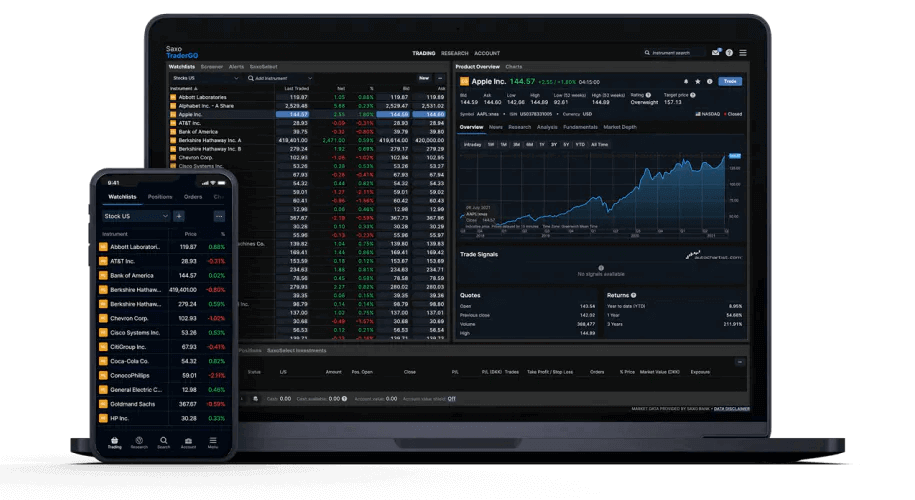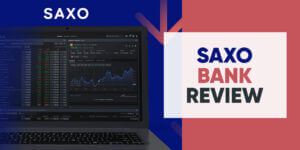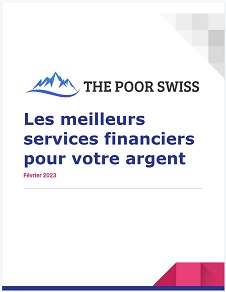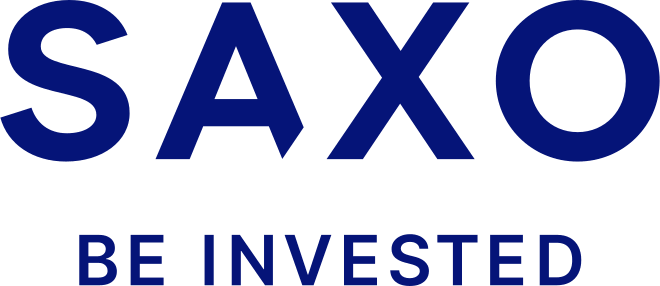Saxo Bank Review 2024 – Avantages et inconvénients
| Mis à jour: |(Information: certains des liens ci-dessous peuvent être des liens d'affiliation)
Depuis qu’elle a réduit ses frais en 2024, la SAXO Bank est devenue un courtier très compétitif pour les investisseurs suisses. SAXO possède de nombreuses fonctionnalités, et cet ensemble est désormais proposé à un prix avantageux.
Mais est-ce suffisant ? C’est ce que nous découvrons dans cet article.
Dans cet article, je présente Saxo Bank en détail, y compris ses avantages et ses inconvénients. A la fin de cet article, vous saurez si SAXO est un bon courtier pour vous ou non !
| Droits de garde | 0,22% par an (max. 10 CHF par mois) |
|---|---|
| Frais d’inactivité | 0 CHF |
| Acheter un ETF suisse | 0,08%, min 3 CHF |
| Acheter des actions américaines | 0,08%, min 1 USD |
| Frais de change | 0.25% |
| Langues | Anglais, français, allemand |
| Application mobile | Oui |
| Application web | Oui |
| Banque dépositaire | Saxo |
| Établi | 1992 |
| Siège de la Suisse | Zürich |
| Siège mondial | Copenhague, Danemark |
Banque Saxo
Investissez avec un courtier Suisse avec des prix très bas. Commencez à investir avec Saxo et recevez 200 CHF en crédits de transactions.
- Bons frais de conversions
- Courtier Suisse
Saxo Bank est une banque d’investissement danoise. Elle a été fondée en 1992. Il s’agit d’une grande institution qui compte plus d’un million de clients et opère dans 28 pays.
Saxo Bank est une société privée. Les trois principaux actionnaires sont le groupe Geely Holding (groupe chinois), le fondateur et PDG Kim Fournais et Sampo Plc.
En Suisse, les investisseurs traitent avec Saxo Bank (Switzerland) Ltd, une banque suisse entièrement agréée. Certains diront que Saxo Bank est toujours un courtier étranger, mais un investisseur suisse ne traitera qu’avec l’entité suisse, soumise aux mêmes règles que n’importe quel courtier suisse.
Il y a donc peu de différence entre traiter avec un courtier suisse et un courtier étranger réglementé au niveau national. C’est pourquoi je le qualifie parfois de courtier suisse, mais il s’agit plutôt d’un courtier régulé par la Suisse.
En 2019, Saxo Bank a acquis BinckBank, augmentant ainsi considérablement sa taille. Grâce à l’échelle, Saxo Bank a pu réduire les frais plus tard et se développer plus rapidement.
En effet, en janvier 2024, Saxo Bank a considérablement réduit ses frais en Suisse (et dans d’autres pays). Certains prix ont été réduits d’un ordre de grandeur.
J’ai été très surpris par ces changements, car Saxo était auparavant un courtier cher. Mais c’est une excellente nouvelle pour les investisseurs suisses. Et j’espère que d’autres courtiers suisses suivront cette tendance et réduiront leurs coûts.
Caractéristiques de la Saxo
Nous pouvons commencer par examiner les caractéristiques de Saxo. Avec Saxo, vous pouvez négocier de nombreux produits différents :
- Actions et ETFs
- Obligations
- Fonds communs de placement
- Options
- Futures
- CFDs
- et plus encore…
Vous devez donc avoir plus d’instruments que vous n’en avez besoin. La plupart des gens n’auront besoin que d’actions, d’obligations et d’ETF pour leur parcours d’investissement.
Saxo dispose d’une licence bancaire suisse complète délivrée par la FINMA. Il s’agit d’un bon point car de nombreux courtiers suisses ne sont pas des banques mais seulement des négociants en valeurs mobilières et utilisent une banque tierce en tant qu’intermédiaire.
Il convient de noter que Saxo respecte les exigences de la FINSA pour tous les ETF. Par conséquent, ils ne proposeront que des ETF américains accompagnés d’un document clé pour l’investisseur (KID) suisse. Comme il n’existe pas de tels ETF américains, la conclusion est que Saxo n’offre pas d’accès aux ETF américains aux investisseurs suisses. Le seul moyen de contourner ce problème est d’être éligible en tant qu’investisseur professionnel, ce qui implique des conditions importantes.
Vous pouvez également négocier des CFD sur des ETF américains, mais les CFD sont généralement de mauvais investissements. Je préférerais donc les ETF européens aux CFD sur les ETF américains.
Saxo est disponible en allemand, français, anglais et italien. Toutefois, l’assistance en italien est partielle car le site web et l’accueil ne sont pas disponibles en italien.
Une autre limite de Saxo est que vous ne pouvez pas inscrire vos actions dans le registre des actionnaires. Cela signifie que vous ne pourrez pas obtenir certains avantages pour les actionnaires si vous le souhaitez (par exemple, des chocolats Lindt).
Saxo ne prêtera pas vos actions par défaut. Toutefois, dans certains pays, vous pouvez opter pour le prêt d’actions et recevoir 50 % des bénéfices. Actuellement, cette fonction n’est pas disponible en Suisse.
Les bases étant posées, il convient de se pencher sur les détails de la Saxo Bank pour un investisseur suisse.
Les niveaux de compte Saxo
Saxo propose trois niveaux de compte différents:
- Classique, sans minimum
- Platine, avec un financement initial minimum de 250 000 CHF
- Identique à la version classique, mais avec des prix plus bas
- Soutien prioritaire
- VIP, avec un financement initial minimum de 1’000’000 CHF
- Même chose que pour VIP, mais des prix encore plus bas
- Accès à des experts en commerce et à des événements
Dans cet article, je me concentre sur le compte classique. Cependant, il est important de savoir que vous pouvez obtenir des conditions encore plus avantageuses si vous disposez d’un financement initial plus important.
Même si vous commencez avec un compte classique, vous pouvez passer à un niveau supérieur une fois que vous avez atteint le seuil nécessaire.
Honoraires Saxo
Lorsque vous investissez à long terme, il est important de limiter les frais. Vous voulez votre argent, pas le donner à votre courtier. Il convient donc d’examiner en détail les frais de Saxo.
Tout d’abord, vous payez des droits de garde de 0,22 % par an. Bien qu’il s’agisse d’une taxe de base élevée, elle est plafonnée à 10 CHF par mois ou à 120 CHF par an. En ce qui concerne les courtiers suisses, il s’agit d’un droit de garde équitable.
En plus des frais de transaction, les droits de garde sont les seuls frais que vous aurez à payer. Saxo n’applique pas de frais de gestion de compte supplémentaires ni de frais d’inactivité.
Sur toutes les places boursières que j’ai consultées, les frais de négociation sont les mêmes pour les actions et les ETF. Voici donc les tarifs de quelques-unes des principales places boursières :
- SIX Swiss Stock Exchange : 0,08% avec un minimum de 3 CHF
- Euronext Paris : 0,08% avec un minimum de 2 EUR
- Bourse de Londres : 0,08 % avec un minimum de 3 GBP
- NYSE : 0,08% avec un minimum de 1 USD
- NASDAQ : 0,08% avec un minimum de 1 USD
Ces redevances sont bénéfiques pour la Suisse. Les pourcentages sont relativement bas et les minima sont excellents.
En tant qu’investisseur suisse, vous devez souvent négocier en devises étrangères, car peu d’ETF adaptés sont cotés en CHF. Dans ce cas, vous devrez payer des frais de conversion de devises.
Heureusement, Saxo offre une excellente commission de conversion de 0,25 %, la meilleure parmi les courtiers suisses.
Enfin, il faut également prendre en compte le droit de timbre suisse. Le fait d’être réglementé par la FINMA en tant qu’entité suisse implique le paiement de cette taxe pour chaque opération boursière. Vous payez 0,075 % pour les actions suisses et 0,15 % pour les actions étrangères. Cette commission est la même pour chaque courtier suisse.
Dans l’ensemble, ces frais sont exceptionnels. Saxo semble beaucoup moins cher que la plupart des courtiers suisses. Les frais de conversion de devises sont particulièrement avantageux par rapport à d’autres courtiers, dont la moyenne est supérieure à 1 %.
Ouvrir un compte chez Saxo
Ouvrir un compte chez Saxo est simple. Tout se passe en ligne à partir de leur site web, ce qui ne devrait pas prendre plus de 15 minutes.
La demande en ligne est assez simple et similaire à celle de la plupart des courtiers actuels. Il se compose de trois étapes principales :
- Remplir toutes vos données.
- Approbation de votre compte (preuve d’identité et de résidence).
- Financement.
Je ne vous ennuierai pas avec les détails de chaque étape car elles sont faciles à suivre.
La seule chose qui peut prendre du temps est le financement, qui ne peut se faire que par virement bancaire. Les fonds peuvent prendre un certain temps avant d’arriver à Saxo.
Il n’y a aucun minimum pour l’ouverture d’un compte. C’est une bonne nouvelle, car vous pouvez commencer à négocier avec peu d’argent. C’est une solution idéale si vous souhaitez tester un service. Et comme il n’y a pas de droit de garde minimum (seulement un maximum), vous pouvez tester le service avec peu de frais.
Dans l’ensemble, l’ouverture d’un compte chez Saxo sera donc très simple.
Négocier avec Saxo

Pour négocier avec Saxo, deux options principales s’offrent à vous :
- La plateforme SaxoTraderGO, supportée sur mobile et desktop
- Il s’agit de l’interface par défaut de la plupart des clients, qui vous permet d’effectuer toutes vos opérations commerciales et d’accéder aux données.
- La plateforme SaxoTraderPRO est compatible uniquement avec les PC et les Mac.
- Cette plateforme est destinée aux investisseurs professionnels et prend en charge jusqu’à 6 écrans.
Dans la plupart des cas, la plateforme SaxoTraderGO offre aux simples investisseurs des fonctionnalités plus que suffisantes. Mais il est bon d’avoir des options avancées pour les investisseurs qui en ont besoin.
Dans l’ensemble, tout le monde devrait trouver ce dont il a besoin pour faire du commerce avec Saxo.
Saxo est-il sûr ?
Avant de faire appel à un courtier, vous devez vous assurer qu’il est aussi sûr que possible.
Saxo est réglementé en Suisse par la FINMA. Toutes ses autres entités sont également bien réglementées dans les différents pays. Comme elles doivent respecter de nombreuses réglementations (du fait de leur présence dans de nombreux pays), elles doivent faire preuve d’une grande rigueur.
Saxo est bien établie depuis 1992. Elle est également rentable depuis plusieurs années. La sécurité financière est un bon signe car les risques de faillite sont faibles.
Saxo est une banque et n’est pas obligée de faire appel à une autre banque dépositaire. Toutefois, comme dans toute banque suisse, votre argent sera protégé par Esisuisse. Cette protection garantit jusqu’à 100’000 CHF par personne.
Les titres devraient être en sécurité en cas de faillite car ils sont détenus sur des comptes distincts à votre nom.
Vous pouvez utiliser une authentification à deuxième facteur (2FA) pour protéger davantage votre compte. 2FA est très important pour vos finances personnelles en ligne ! Pour l’instant, ils ne proposent que le 2FA par SMS. Bien que ce soit mieux que rien, je préfère une option 2FA plus robuste.
Vous pouvez également choisir de faire confiance à l’appareil sur lequel vous vous connectez. Vous ne devez saisir votre deuxième facteur qu’une seule fois, et non à chaque connexion. Bien que cela soit pratique, cela réduit la sécurité et devrait être évité, à mon avis.
Investir avec Saxo est sûr, comme avec n’importe quel autre courtier suisse.
Réputation de Saxo
Il convient également d’examiner la réputation d’un courtier avant de l’utiliser pour investir en bourse.
J’utilise généralement TrustPilot comme source d’avis. Nous pouvons donc commencer par consulter les avis sur le Groupe Saxo sur TrustPilot. Il est essentiel de mentionner que ces examens concernent toutes les parties de Saxo, et pas seulement l’entité suisse. Globalement, Saxo obtient une note de 3,7 sur 5, ce qui n’est pas excellent mais pas non plus horrible pour les courtiers.
On peut également trouver des avis sur Saxo Suisse sur Trustpilot. La Saxo obtient une note de 4,4 sur 5, ce qui est excellent. Toutefois, ce chiffre n’est que le résultat de 75 évaluations, ce qui est très peu.
En examinant les critiques négatives, nous pouvons trouver quelques thèmes communs:
- Difficile de joindre le service clientèle.
- Les frais sont trop élevés (avant les changements à partir de 2024).
- Difficile d’approvisionner le compte en raison des procédures KYC.
- Il existe quelques problèmes techniques et de vitesse sur la plateforme.
Du côté positif, nous pouvons trouver des thèmes communs :
- Bon service à la clientèle.
- Plate-forme facile à utiliser.
- Bonne exécution des opérations.
Après avoir lu un grand nombre de ces avis, je ne m’inquiète pas des commentaires négatifs ou de la note globale. Tout d’abord, de nombreuses personnes se plaignent des frais, mais je suppose que la plupart d’entre elles n’ont pas lu attentivement tous les frais avant de s’engager. Cela se produit chez presque tous les courtiers que j’ai examinés.
Quant au service clientèle, il est le même chez presque tous les courtiers. Parfois, il est difficile de résoudre certains problèmes, et les gens s’échauffent et publient des commentaires négatifs. Mais en lisant les avis positifs, il semble qu’il y ait aussi des avis positifs sur le service client.
J’ai également consulté les avis Google sur Saxo Suisse. Ils ont obtenu 4,3 étoiles sur 5. Les avis négatifs et positifs sont très similaires à ceux de TrustPilot, avec plus d’avis positifs qu’auparavant. Encore une fois, il s’agit également des personnes qui font appel à un courtier sans lire sa structure tarifaire.
Dans l’ensemble, je pense que la réputation de Saxo est bonne, mais pas impeccable.
Alternatives à Saxo
Il est toujours important de comparer un courtier avec ses alternatives. Nous devrions comparer Saxo avec au moins Interactive Brokers (un courtier étranger) et Swissquote (un courtier suisse).
Saxo Bank vs Swissquote
Tout ce dont vous avez besoin pour commencer à investir en bourse. Créez un compte Swissquote et gagnez 100 CHF de crédits de frais avec mon code MKT_THEPOORSWISS.
- Courtier Suisse
- Facile à utiliser
Swissquote est mon courtier suisse préféré. Il offre de nombreuses fonctionnalités et ses prix sont plutôt corrects, en ce qui concerne les courtiers suisses.
Les deux courtiers ont une bonne réputation et sont établis en Suisse depuis longtemps. Ils sont tous deux réglementés en Suisse et offrent le même niveau de sécurité. Ils offrent tous deux un accès à de nombreuses places boursières. Et comme ils se trouvent tous deux en Suisse, ils doivent prélever le droit de timbre suisse.
Nous commençons par les frais de garde. Le maximum est de 120 CHF par an chez Saxo et de 200 CHF par an chez Swissquote, ce qui donne un léger avantage à Saxo. De plus, Swissquote prélève une commission supplémentaire de 0,03% (sans maximum) sur les actifs supérieurs à un million de francs suisses.
Heureusement, aucun de ces courtiers n’applique de frais d’inactivité ou de gestion supplémentaires.
Nous devons comparer les frais de négociation de ces deux courtiers. Sur la bourse SIX, voici quelques exemples de coûts pour ces courtiers :
- 500 CHF : 3 CHF chez Saxo et 5 CHF chez Swissquote.
- 2000 CHF : 3 CHF chez Saxo et 20 CHF chez Swissquote.
- 5000 CHF : 4 CHF chez Saxo et 30 CHF chez Swissquote.
- 10000 CHF : 8 CHF chez Saxo et 30 CHF chez Swissquote.
Les différences sont assez importantes. Saxo peut être plusieurs fois moins cher que Swissquote!
Voici quelques exemples de frais de négociation pour une action sur le NYSE :
- 500 USD : 1 USD chez Saxo et 5 USD chez Swissquote.
- 2000 USD : 1,60 USD chez Saxo et 20 USD chez Swissquote.
- 5000 USD : 4 USD chez Saxo et 30 USD chez Swissquote.
- 10000 USD : 8 USD chez Saxo et 30 USD chez Swissquote.
Là encore, les différences sont significatives. Saxo est, là encore, beaucoup moins cher que Swissquote.
Un autre avantage important de Saxo est sa commission de conversion de devises. En effet, à 0,25 %, Saxo est presque quatre fois moins cher pour convertir des devises que Swissquote à 0,95 %.
D’autre part, Swissquote présente l’avantage non négligeable de vous permettre d’investir dans des ETF domiciliés aux États-Unis. Ces ETF sont plus efficaces sur le plan fiscal et généralement moins chers que les ETF européens. Cela peut faire une différence significative à long terme.
Dans l’ensemble, Saxo semble être nettement moins cher que Swissquote. C’est une excellente nouvelle, car nous avons peu de courtiers abordables en Suisse.
J’ai l’intention de faire une comparaison complète entre Saxo et Swissquote prochainement. Ces deux courtiers semblent être les deux meilleurs courtiers suisses disponibles. Je ferai également quelques simulations pour voir si les frais de Saxo compensent l’absence d’ETF américains.
Saxo Bank vs Interactive Brokers
Le courtier dont vous avez besoin pour acheter des actions et ETFs avec des frais incroyablement bas! Investissez dans des compagnies américaines dès 0.50 USD!
- Très bon marché
- Exécution sans faute
Enfin, il convient de comparer Saxo Bank avec un courtier étranger, Interactive Brokers.
Les deux courtiers sont bien réglementés et jouissent d’une bonne réputation. Saxo Bank est réglementée en Suisse, tandis qu’Interactive Brokers est réglementée au Royaume-Uni et aux États-Unis. Du point de vue de la sécurité, les deux courtiers sont au même niveau.
Nous pouvons commencer par les frais de garde. Saxo Bank facture un maximum de 120 CHF par an pour la conservation. IB, en revanche, n’a pas de droits de garde. Aucun de ces courtiers n’applique de frais d’inactivité ou d’autres frais de gestion de compte.
Pour les frais de négociation, j’utiliserai le système de tarification échelonnée d’Interactive Brokers. Ce système est généralement moins coûteux pour les petites opérations, mais pas toujours pour les grandes.
Sur la bourse SIX, voici les tarifs des deux courtiers :
- 500 CHF : 3 CHF chez Saxo et 4,45 CHF chez IB.
- 2000 CHF : 3 CHF chez Saxo et 4,68 CHF chez IB.
- 5000 CHF : 4 CHF chez Saxo et 6,13 CHF chez IB.
- 10000 CHF : 8 CHF chez Saxo et 9,38 CHF chez IB.
Il est intéressant de noter que Saxo est moins cher qu’IB pour les opérations à la bourse suisse. C’est précisément ce que j’attends d’un courtier suisse. Cependant, de nombreux courtiers suisses sont plus chers qu’Interactive Brokers.
Voici quelques exemples de frais de négociation pour une action sur le NYSE :
- 500 USD : 1 USD chez Saxo et 0,36 USD chez IB.
- 2000 USD : 1,60 USD chez Saxo et 0,41 USD chez IB.
- 5000 USD : 4 USD chez Saxo et 0,51 USD chez IB.
- 10000 USD : 8 USD chez Saxo et 0,67 USD chez IB.
L’IB peut être nettement moins cher sur les actions américaines. Cependant, je suis toujours impressionné par la façon dont Saxo se rapproche d’IB. Les autres courtiers suisses sont beaucoup plus chers qu’IB.
Un autre avantage de l’IB est qu’il vous permet d’économiser le droit de timbre, puisque cette taxe n’est due qu’aux courtiers suisses.
De plus, Interactive Brokers a l’avantage significatif d’offrir un accès aux ETF américains, ce qui n’est pas le cas de Saxo. Cela peut faire une différence très importante dans les rendements à long terme.
Enfin, la conversion de devises est de 0,25 % chez Saxo Bank, tandis que IB facture 2 USD pour chaque conversion. Ainsi, Saxo sera moins cher pour les conversions inférieures à 800 USD, et IB sera moins cher au-delà.
Si vous avez un portefeuille qui utilise des ETF ou des actions américaines, Interactive Brokers sera nettement moins cher que Saxo. Mais Saxo est tout à fait compétitif.
Si vous êtes intéressé, je pourrais faire une comparaison complète de ces deux courtiers à l’avenir.
FAQ
À combien s'élèvent les frais de conversion de devises chez Saxo ?
Vous paierez 0,25 % de frais de conversion pour chaque conversion de devise.
Pouvez-vous acheter des ETF américains avec Saxo Bank ?
Non. Saxo Bank respecte les exigences de la FINSA, ce qui signifie que tout ETF doit avoir un KID suisse. Les ETF américains n'ont pas de KID suisse, vous ne pouvez donc pas les négocier en tant qu'investisseur privé suisse avec Saxo.
À qui s'adresse Saxo Bank ?
Saxo bank est une bonne solution pour les investisseurs suisses qui recherchent un courtier régulé par la Suisse très abordable et doté de nombreuses fonctionnalités.
À qui Saxo Bank ne convient-elle pas ?
Saxo Bank n'est pas très bon si vous souhaitez négocier des ETF américains.
Saxo Résumé

Saxo a considérablement réduit ses frais, est-ce que c'est bon maintenant ? Cet examen approfondi couvre ce courtier en détail afin de déterminer si nous devrions l'utiliser.
Marque du produit: Saxo
4.5
Banque Saxo Avantages
- Excellents prix
- Excellents frais de conversion de devises
- Nombreux investissements disponibles
- Entreprise bien établie
- Bonne sécurité
Banque Saxo Inconvénients
- Pas d'accès aux ETF américains
- Onboarding non disponible en italien
Conclusion
Investissez avec un courtier Suisse avec des prix très bas. Commencez à investir avec Saxo et recevez 200 CHF en crédits de transactions.
- Bons frais de conversions
- Courtier Suisse
Saxo est un bon courtier suisse, bien établi et très abordable. Ce service offre un accès à toutes les bourses dont vous avez besoin et à de nombreux produits d’investissement. En comparaison avec d’autres courtiers suisses, ils sont toujours parmi les moins chers.
J’apprécie que Saxo ait réduit ses frais de manière significative. J’espère que cela lancera une bonne tendance en Suisse, où de nombreux services sont hors de prix.
Le seul inconvénient majeur, à mon avis, est le manque d’ETF américains. Si vous voulez optimiser au maximum, les ETF américains sont indispensables. Cela dit, les frais peu élevés de Saxo compensent en partie cet inconvénient.
J’ai l’intention de comparer Swissquote et Saxo dans les mois à venir pour voir si les ETF américains et les frais plus élevés sont meilleurs que les ETF européens et les frais moins élevés.
Et vous ? Que pensez-vous de Saxo ?
Téléchargez cet e-book et optimisez vos finances et économisez de l'argent en utilisant les meilleurs services financiers disponibles en Suisse!
Télécharger l'e-book GRATUITRecommended reading
- More articles about Meilleurs Courtiers
- More articles about Investir
- Interactive Brokers Review 2024: Pour et Contre
- Quel est le meilleur courtier suisse sur 2024?
- Revue de Charles Schwab International – Pour et Contre




Oui une société suisse en mains chinoises pas danoises… comme pour le sujet des voitures électriques chinoises à mon humble avis, c’est une question d’éthique. Saxo= Geely = gouvernement chinois = profits pour gouvt chinois qui ne connaît pas les droits humains (opposants arrêtés, Ouîghours torturés et emprisonnés, Tibétains, etc) . les voitures chinoises toutes subventionnées par le gouvt chinois sont moins chères que les européennes du coup. fausse concurrence.
Merci pour ce rapport sur Saxo. J’envisageai d’y mettre une partie de mon portefeuille mais en fouillant que Saxo dit être danoise mais en fait ils y a Geely gde sté chinoise comme actionnaire à 49% de la sté danoise ! Comme chacun sait, le gouvt chinois y a des actions et donc pour des raisons d’éthique je ne travaillerai pas avec eux. Geely produit des voitures electriques qui va inonder la Suisse. Les voitures Volvo leur appartiennent. le gouvt chinois a donné en 2022 plus de 26 milliards d’€ comme aide à ses stés de voitures…
Effectivement, j’ai bien mentionné Geely dans la liste des actionnaires principaux.
Personnellement, je ne vois pas trop en quoi c’est un problème. Ils ont une société Suisse, qui suit les règles de la FINMA. C’est donc la même chose en pratique qu’un autre courtier Suisse. Et je ne vois pas le rapport avec des voitures. S’ils produisent des bonnes voitures, je ne vois pas pourquoi on ne les achèterais pas. C’est pas différent pour moi d’une voiture Française.
Ancien utilisateur de Saxo pendant un peu moins de 15 ans ce que je n’ai pas apprécié chez Saxo a été le changement constant de frais (que j’avais passé au peigne fin avant de les rejoindre), ajout de frais d’inactivité de manière impromptue (pas top si vous avez une stratégie long sans augmenter vos investissements) en plus d’avoir des frais de garde.
C’était pratique, contrairement à IB (point négatif majeur), de ne pas avoir besoin d’avoir la monnaie d’achat d’un titre pour pouvoir l’acheter. Je ne me souviens pas si les taux de change étaient corrects ou pas (mais n’ai pas souvenir que cela ait été dramatique, essentiellement EUR et USD).
Merci de ton retour, Pedro, c’est très intéressant.
Et c’est un excellent point. Dans le passé, ils ont changé souvent de frais. Espérons qu’ils aient appris leur leçon et qu’ils ne continuent pas sur cette route.